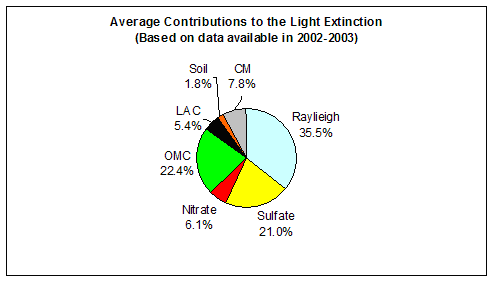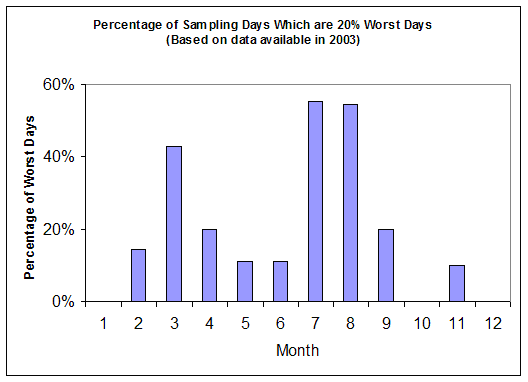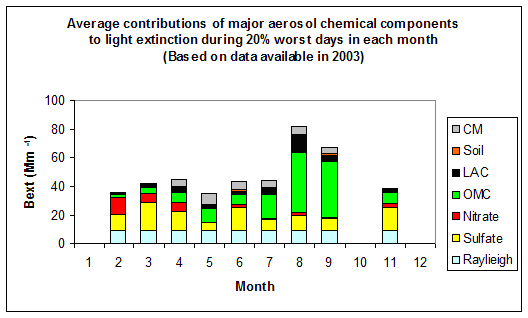
NOCH1 (Northern Cheyenne, MT, Lat. 45.5, Long. -106.6)
Based on the data available from 6/2002-12/2003, organics emitted from regional forest fires is the major cause of haze at the Northern Cheyenne Tribe in the 20% worst days. Sulfate has a relatively constant and important contribution to haze all-around the year.
In Northern Cheyenne, the average PM2.5 mass concentration during 6/2002-8/2003 is 3.8 mg/m3, and the average total light extinction coefficient (Bext) is 29 Mm-1 (Visual Range ~ 136 Km; Deciview ~ 11). OMC and sulfate are two of the largest contributors to haze, with an average contribution of 22% and 21%, respectively.

Figure 1. Average contributions of major aerosol chemical components to light extinction
Based on the data in 2003, the average light extinctions in the 20% best, middle 60% and 20% worst haze days are calculated and shown in Figure 2. The light extinction coefficient of 55 Mm-1 in the 20% worst days is about 2.4 and 3.7 times of the values in the middle 60% and 20% best days. Organics is the largest contributor to haze in the 20% worst days in 2003, with an average contribution of ~38%. Figure 3 suggests that, in 2003, the highest occurrence of the 20% worst days happened in July and August, in which ~55% of the sampling days are the 20% haziest days at Northern Cheyenne. OMC, which is most likely from forest fires, contributes more than 50% to light extinction in the 20% worst days during the summer of 2003. Sulfate has a relatively constant and important contribution to haze all-around the year.

Figure 2 Average contributions of major aerosol chemical components to light extinction in 20% best, middle 60% and 20% worst days

Figure 3 Percentage of sampling days that are 20% worst days in each month

Figure 4 Average contributions of major aerosol chemical components to light extinction during 20% worst days in each month